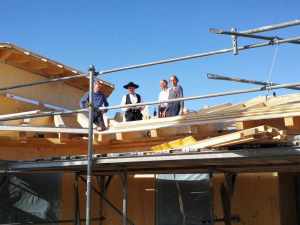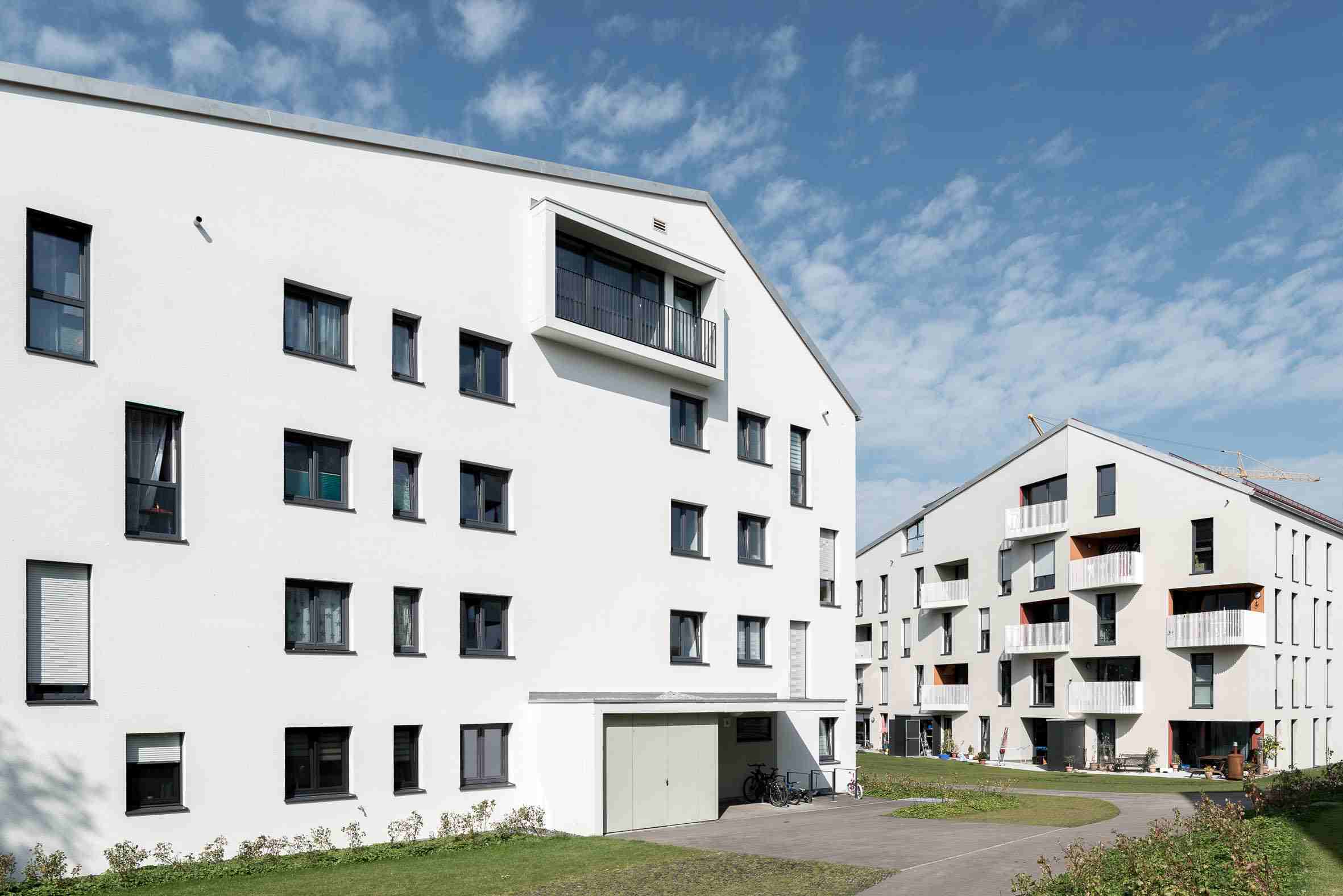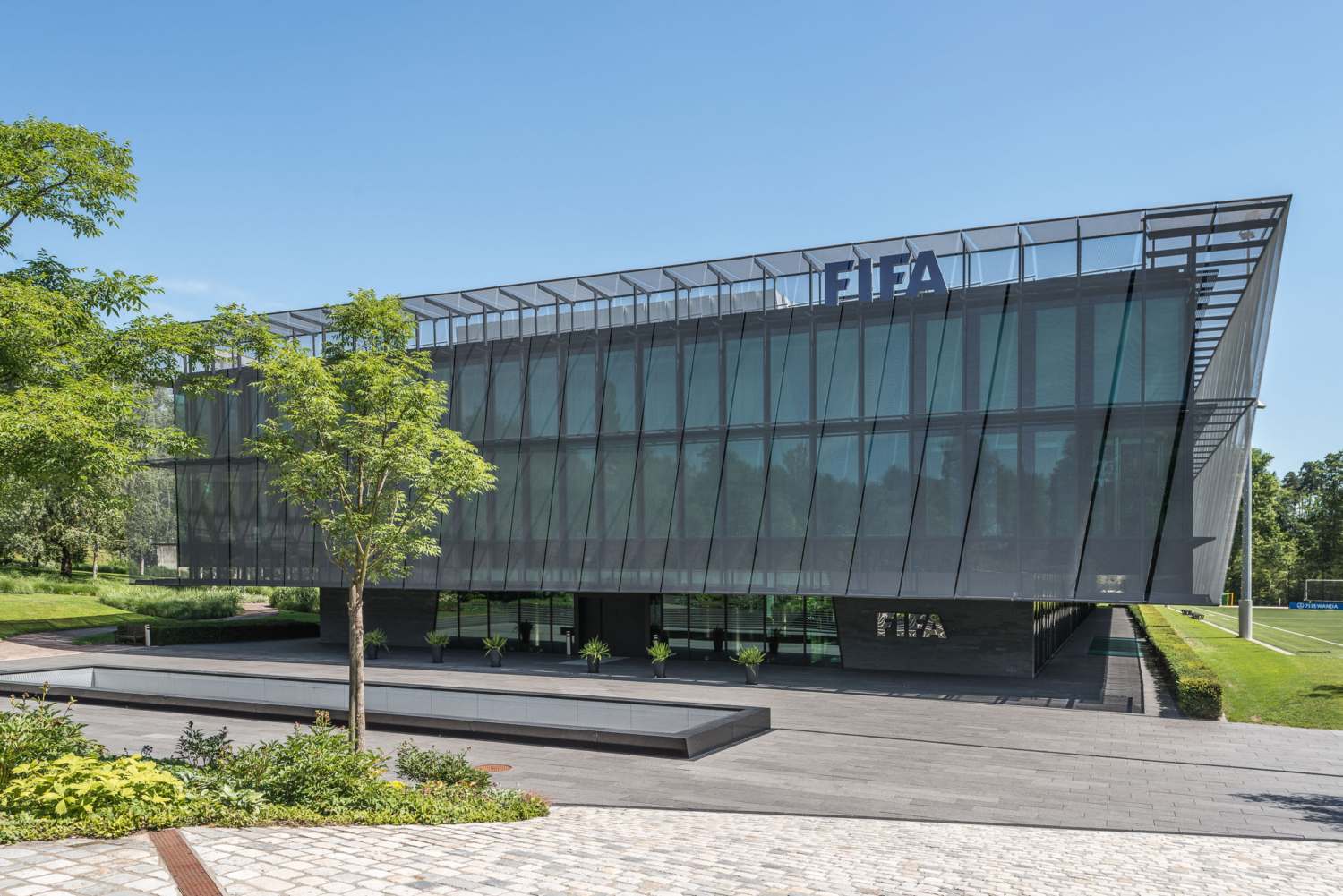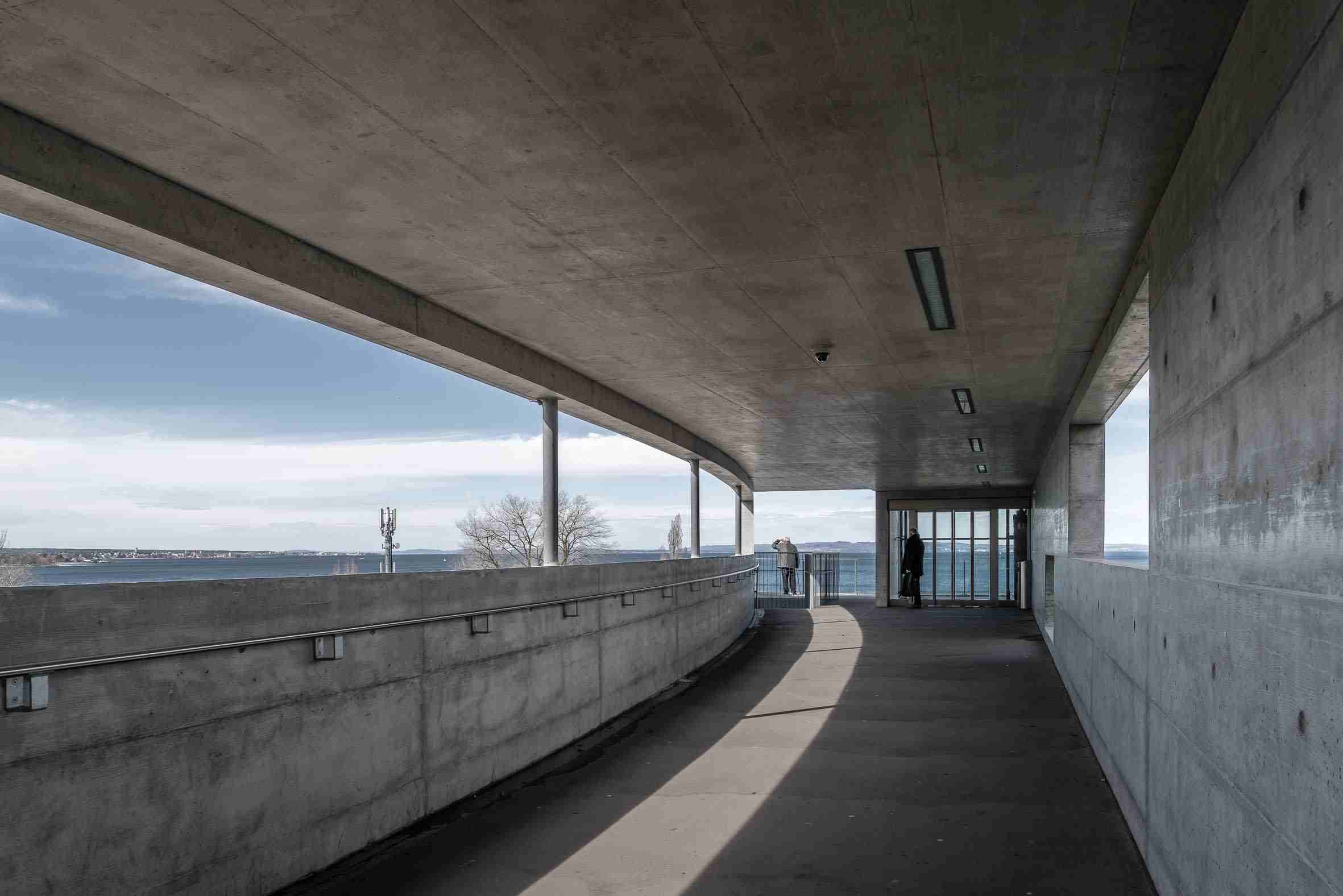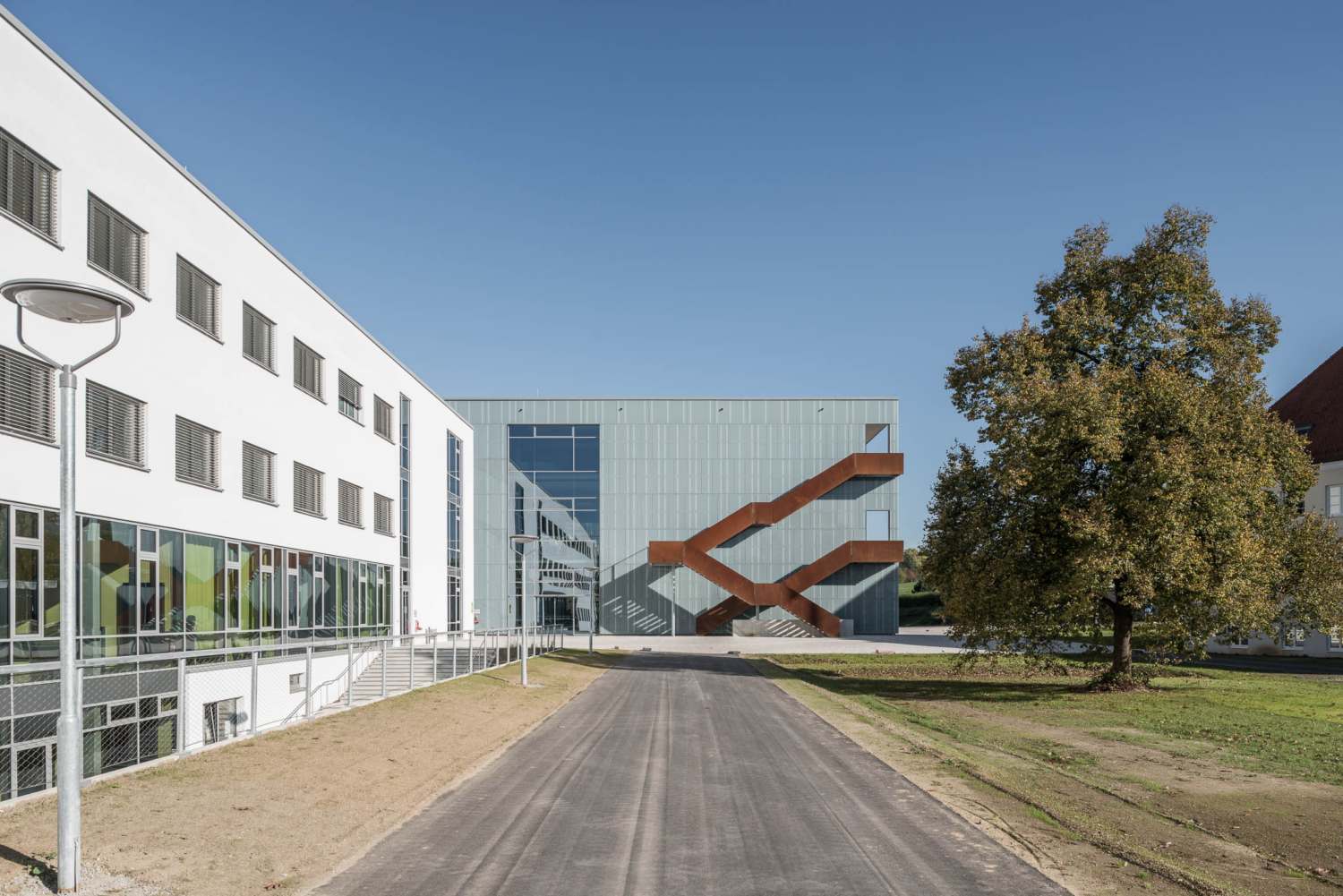Subunternehmer in der Bauwirtschaft - Neureglung der Unternehmerhaftung
Baubetrieb
Rückblick Südtirol
Nach Verbreitung des Corona-Virus besonders in Nord-Italien bleibt nur noch ein wehmütiger Rückblick auf die weltbekannte Mailänder Möbelmesse Salone del Mobile im April 2019. Dort präsentierten neben internationalen, auch verschiedene Südtiroler Designer ihre Neuheiten. Dabei bedeutet den Italienern der Messeauftritt und die Präsentation ihrer Produkte alles. Design und Kunsthandwerk sind seit der Renaissance Grundlage der Wertschöpfung in den nördlichen Regionen. Es waren norditalienische Kunstschaffende, die hervorragende Arbeiten mit eigenwillig erfinderischer Vielfalt erschufen. Wenn die Pandemie vorüber ist und der Rückzug aus dem gesellschaftlichen Leben abklingt, dann sollte es die Wiedergeburt italienischen Produktdesigns geben und ein gesellschaftliches Anliegen europäischen Ausmaßes daran angeschlossen sein.
Wie bereits im Jahr zuvor stellte das Traditionsunternehmen Plank seine einzigartigen und innovativen Designs aus, die Qualität und Funktionalität miteinander verschmelzen. Ebenso zeigte JOKODOMUS, das Familienunternehmen, das für seine flexiblen und kombinierbaren Küchenmodule für In- und Outdoor bekannt ist, dort Neues aus seiner Produktreihe.
Design aus Südtirol
Junges Südtiroler Design zeichnet sich vor allem durch das enge Zusammenspiel von Tradition und Moderne aus. Der seit 2016 bestehende Concept & Art Store Variatio stellt diese Verbindung in den Mittelpunkt. Der Store befindet sich in Bruneck in einem mittelalterlichen Bürgerhaus und setzt sich als Ziel, seinen Kunden im konstanten Wechsel besondere und handgefertigte Einzelstücke von jungen Designern zu präsentieren. Ein schönes Beispiel für die Produkte des Konzept-Stores sind die 2016 entstandenen Kleideraufhänger Attaccati des jungen Produktdesigners Raphael Di Biase. Die kunstvollen Haken aus Marmor und verchromten Messing wirken in ihrer Leichtigkeit und Eleganz wie ein im Wind wehendes Blatt.
Anna Quinz und Fabio Dalvit vom Modelabel Qollezione bedienen sich hingegen an dem traditionellen Schurzstoff Südtirols. Seit seiner Gründung in 2017 ist das Label dafür bekannt, diesen Stoff als Ausgangsmaterial ihrer Designs zu wählen. Die organischen Materialen der einstigen männlichen Arbeitskleidung werden bei Qollezione in moderne Designs für den alltäglichen Gebrauch umgewandelt.
Ein weiterer Blickfang sind die eindrucksvollen Taschen aus Industriematerialien des 2005 gegründeten Südtiroler Labels Zilla. Sylvia Pichler setzt mit ihren mit Aluminium gefütterten und in außen metallic-laminierten Ledertaschen ein Statement. Die zeitlosen minimalistischen Designs wurden bereits im Gründungsjahr auf der Mailänder und Pariser Fashion Week gezeigt und hängen in ausgewählten High-End Stores, unter anderem in Paris, Japan und New York.
(Er-)Leben: Architektur in Südtirol
Eine Anlaufstelle für Stil- und Genussbegeisterte ist das von Markus Tauber entworfene brix 0.1. Die beiden von Sternekoch Norbert Niederkofler angelernten Köche Philipp Fallmerayer und Ivo Messner verwöhnen die Gäste mit hochwertigen Zutaten aus der Region. Neben dem kulinarischen Erlebnis beeindruckt die trichterähnliche Bauweise des Gebäudes, das sich zur Natur öffnet und so die Verbindung zum See ermöglicht. Die offene Gestaltungsweise zieht sich weiter bis zum Außenbereich, sodass die Küche, der Essbereich und die Natur miteinander verschmelzen. Cortenstahl, Marmor, Beton und Glas zieren die Fassade sowie den Innenbereich des brix 0.1.
Brixens historischer Stadtkern trifft mit dem Designhotel Pupp auf moderne Architektur. Die futuristische Bauweise des Hotels erinnert an den Bauhausstil und durch die mit hervorstehenden Bauelementen versehene helle Fassade wird eine spannende Abwechslung von Licht und Schatten erzeugt. In der gegenüberliegenden Traditionskonditorei lassen sich regionale Köstlichkeiten aus eigener Herstellung genießen.
Meldung: IDM Südtirol, I-39100 Bozen
Regie Statement – Carlos Saura
RENZO PIANO - ARCHITEKT DES LICHTS (2018)
Diese Dokumentation war eine spannende Reise, bei der ich mit einem kleinen Team immer wieder nach Santander gereist bin. Ich habe einen Sinn für Freiheit zurückgewonnen, den du automatisch bekommst, wenn du einen Dokumentarfilm drehst. Bei meinen Gesprächen mit Renzo Piano habe ich versucht, die Hochs und Tiefs und die Komplexität eines solchen Projekts zu reflektieren und vor allem: Den Architekten zu verstehen, der es erschaffen hat. Aus dieser intimen Beziehung zwischen dem Architekten und Santander und jenen, die die Arbeit möglich gemacht haben, ist ein Gebäude geboren, das ein Beispiel setzt für kreative, moderne, funktionale Architektur.
Der Produzent Álvaro Longoria und das Centro Botìn kamen mit dem Vorschlag “Der Architekt und Santander” auf mich zu. Die Idee war einen Dokumentarfilm über die Entwicklung des Gebäudes zu drehen, das Renzo Piano für Santander designte. Die Idee, die Stadt besser kennenzulernen sprach mich an, ebenso wie die Chance mit einem Architekten von Renzo Pianos Status sprechen zu können oder mit dem Präsidenten von der Banco de Santander, Emilio Botìn. Mein erstes Treffen mit Renzo war in Genua, wo er ein wunderschönes Studio hat, auf einem Berg, mit Blick über die Stadt. Von Anfang an verstanden wir uns gut, und nach einiger Zeit der Zusammenarbeit sah ich, dass wir einige Ansichten über die Integrität des Kunstwerks und über die Verantwortung in der Entscheidungsfindung teilten. Renzo Piano ist ein Einzelgänger, ein Unternehmer, intelligent, kreativ und vor allem ein visionärer und fantasievoller Mensch.
Eine weitere Schlüsselfigur in diesem Projekt war der Banker Emilio Botìn, Präsident des Centro Botìn und der Banco de Santander, einer der wichtigsten Banken Europas. Leider konnte unser geplantes Interview mit Emilio Botìn nicht weiterverfolgt werden, da er starb, bevor er das fertige Projekt sehen konnte. Sein Sohn, Javier Botìn, verfolgte den Arbeitsfortschritt mit demselben Enthusiasmus wie sein Vater und ist nun der Präsident der Botìn Foundation.
Meine Intention war es auch, die Stadt Santander innerhalb Cantabria und Spanien zu situieren, um die Frage zu beantworten: Wo ist Santander? Dafür haben wir in verschiedenen Regionen Cantabrias gedreht, bis wir schlussendlich in Santander ankamen, eine der wenigen spanischen Städte, die an das Meer grenzen. Seine malerische Bucht verteidigt es vor Stürmen und Wellen des Atlantischen Ozeans und gibt gleichzeitig einen Rückzugsort für Angler und Touristen, die jedes Jahr in die Stadt kommen. Dort hat Renzo Piano entschieden ein Gebäude zu errichten, das die Bürgeraktivität und das kulturelle Interesse fördert.
CARLOS SAURA
Carlos Saura bedarf keiner Vorstellung. Er hat bei mehr als 30 Filmen Regie geführt und wurde mit zahlreichen Preisen der wichtigsten Festivals ausgezeichnet (Cannes, Berlinale, San Sebastián, Karlovy Vary, Bafta, OSCAR Nominierungen…). Daher kann Carlos Saura ausschließlich die Projekte filmen, die ihn interessieren und motivieren. Renzo Piano – Architekt des Lichts ist einer davon.
RENZO PIANO
Renzo Piano wurde in einer Familie von italienischen Baumeistern geboren. Er studierte in Politecnico, Mailand und richtete 1971 das Büro Piano & Rogers in London mit Richard Rogers ein, mit dem er den Wettbewerb für das Centre Pompidou in Paris gewann. 1981 wurde der Renzo Piano Building Workshop etabliert, mit Standorten in Paris, Genua und New York. Er erhielt zahlreiche Auszeichnungen und Anerkennungen, darunter der Goodwill Ambassador der UNESCO (1994) und der Pritzker Architecture Prize im Weißen Haus in Washington (1998). 2004 eröffnete er die Renzo Piano Foundation, eine nichtgewerbliche Organisation, die den Architektenberuf durch Maßnahmen in der Bildung unterstützt. 2013 wurde Renzo Piano vom italienischen Präsident zum Senator auf Lebenszeit ernannt und 2014 erhielt er das Ehrendiplom der Columbia Universität.
FILM FESTIVALS (Auswahl)
Biografilm Festival, Italien 2018 Architecture & Design Film Festival NYC, 2018 Luxembourg City Film Festival, 2018 Cineuropa, 2018 Royal Academy of Arts, UK 2019,
Quelle: mindjazz pictures
Renzo Piano – Architekt des Lichts
Neuartiges Unterflursystem liefert im Boden versenkbare Mülltonnen
Haustechnik
EPS Styropor ökologischer Dämmstoff
Studie
S2 Architektur baut Waldorfkindergarten
Ökologische Holzbauweise sorgt für gesundes Wohnklima
Gesundes Wohnen durch eine ökologische Holzbauweise spielt für immer mehr Menschen eine Rolle. Tatsächlich verbringen Menschen rund 90 Prozent ihres Lebens in geschlossenen Räumen – einen Großteil davon allerdings nicht im eigenen Zuhause, sondern am Arbeitsplatz, in der Schule oder im Kindergarten. In Anbetracht dessen möchten Eltern für den eigenen Nachwuchs nur das Beste. Dies gilt auch für die Wahl der Betreuungseinrichtung, die im Idealfall einer Gesundheit der Kinder förderlich ist. Dies gelingt durch den Einsatz umweltschonender Baumaterialien und unter Berücksichtigung baubiologischer Maßnahmen.
Dieser Herausforderung hat sich die S2 GmbH gestellt und die Planung sowie die Projektbegleitung eines Waldorfkindergartens im rheinland-pfälzischen Frankenthal übernommen. Das Richtfest fand im Herbst 2019 statt. Der Einzug der ersten Kindergruppen ist für Mai dieses Jahres geplant.
Waldorf-Gedanke stand beim Bau im Fokus
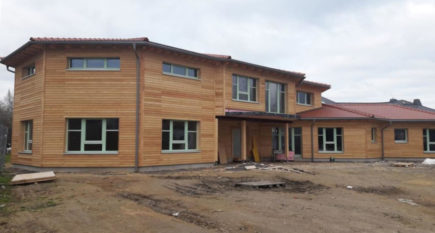 Bei der Planung des Kindergartens galt es, nicht nur ökologische Maßnahmen umzusetzen. Im Entwurf sollte sich auch der Waldorf-Gedanke wiederspiegeln. Eine große Schwierigkeit bestand darin, gesetzliche Anforderungen zu Brandschutz und Barrierefreiheit in Einklang mit der Natur und der Waldorf-Pädagogik zu bringen. Bei der Waldorf-Lehre handelt es sich um ein pädagogisches Konzept, bei dem im Denken, Fühlen und Wollen der Kinder auch die Grundsätze der Freiheit der Kultur, der Gleichheit in der politischen Gemeinschaft und der Brüderlichkeit im wirtschaftlichen Leben berücksichtigt werden sollen. Seele, Geist und Leib sollen im Einklang leben. Besonders letzteres war beim Bau des neuen Kindergartens entscheidend: Denn in erster Linie sollten sich die Kinder in ihren neuen Räumlichkeiten wohlfühlen. Doch gleichzeitig sollte durch die Verwendung natürlicher Baustoffe auch für ein gesundes Wohnklima gesorgt werden. Dazu wurde auf die ökologische Holzbauweise gesetzt, denn Holz gilt im Gegensatz zu vielen anderen Materialien als besonders umweltfreundlicher und allergikergeeigneter Naturbaustoff. Zudem spart der konsequente Einsatz von Holz klimaschädliches CO2 ein und trägt zu einer effizienten Nutzung der Ressourcen bei. Aufgrund ihrer Isoliereigenschaften benötigen Holzhäuser zudem weniger Heizenergie und wirken sich durch ihre feuchtigkeitsregulierenden Eigenschaften positiv auf das Raumklima aus.
Bei der Planung des Kindergartens galt es, nicht nur ökologische Maßnahmen umzusetzen. Im Entwurf sollte sich auch der Waldorf-Gedanke wiederspiegeln. Eine große Schwierigkeit bestand darin, gesetzliche Anforderungen zu Brandschutz und Barrierefreiheit in Einklang mit der Natur und der Waldorf-Pädagogik zu bringen. Bei der Waldorf-Lehre handelt es sich um ein pädagogisches Konzept, bei dem im Denken, Fühlen und Wollen der Kinder auch die Grundsätze der Freiheit der Kultur, der Gleichheit in der politischen Gemeinschaft und der Brüderlichkeit im wirtschaftlichen Leben berücksichtigt werden sollen. Seele, Geist und Leib sollen im Einklang leben. Besonders letzteres war beim Bau des neuen Kindergartens entscheidend: Denn in erster Linie sollten sich die Kinder in ihren neuen Räumlichkeiten wohlfühlen. Doch gleichzeitig sollte durch die Verwendung natürlicher Baustoffe auch für ein gesundes Wohnklima gesorgt werden. Dazu wurde auf die ökologische Holzbauweise gesetzt, denn Holz gilt im Gegensatz zu vielen anderen Materialien als besonders umweltfreundlicher und allergikergeeigneter Naturbaustoff. Zudem spart der konsequente Einsatz von Holz klimaschädliches CO2 ein und trägt zu einer effizienten Nutzung der Ressourcen bei. Aufgrund ihrer Isoliereigenschaften benötigen Holzhäuser zudem weniger Heizenergie und wirken sich durch ihre feuchtigkeitsregulierenden Eigenschaften positiv auf das Raumklima aus.
Gesundheit und Wohlbefinden der Kinder fördern
Beim Bau des neuen Kindergartens in Frankenthal hat die S2 GmbH auch ihre baubiologische Expertise einfließen lassen, um die Wohngesundheit der Kinder zu fördern. Bei der Baubiologie werden die Wechselwirkungen zwischen dem gebauten Umfeld und dem Menschen berücksichtigt. Mit Hilfe von Gebäude- und Grundstücksanalysen wird der Bau auf Wohngifte, Schadstoffe, elektromagnetische Wellen, Elektrosmog, Lärmbelastung und Luftionisation untersucht und Störfaktoren beseitigt. Zu einem baubiologisch-optimal gestalteten Wohnumfeld gehören zum einen natürliche Licht- und Beleuchtungsverhältnisse, die eine harmonische und kreative Atmosphäre schaffen. Durch eine kontrollierte Lüftung mit Wärmerückgewinnung wird zum anderen für einen optimalen Luftwechsel gesorgt und die Verbreitung gesundheitsgefährdender Erreger minimiert. Durch schadstoffabsorbierende Innenwände wird außerdem sichergestellt, dass gesundheitsschädliche Stoffe, die durch Möbelstücke oder elektronische Geräte abgegeben werden, sich nicht in der Raumluft verbreiten. Dies ist insbesondere bei Kindern wichtig, da ihr Immunsystem noch nicht so ausgereift und belastbar ist wie das eines Erwachsenen. Sie sollen in einem schadstofffreien und unbelasteten Umfeld gesund aufwachsen können, um sich zu starken und mitfühlenden Persönlichkeiten entwickeln zu können. Dies wird durch den neuen, ökologisch gebauten Waldorfkindergarten sichergestellt.
Über die S2 GmbH
Die Identität der S2 GmbH ist durch die Verbindung ökologischer und baubiologischer Gesichtspunkte mit den klassischen Stilelementen skandinavischer Architektur geprägt. Als Ingenieurbüro mit mehr als 25 Jahren Erfahrung kann das Unternehmen aus einem einzigartigen baubiologischen Kenntnisschatz schöpfen und schafft gemeinsam mit seinen Kunden Lebensräume aus gesunden, nachwachsenden Rohstoffen und regenerativen Energien.
Meldung: S2 GmbH, 69488 Birkenau
Freidorf in Muttenz bei Basel
Das Freidorf - Die Genossenschaft
Leben in einer aussergewöhnlichen Siedlung
Siedlungsgenossenschaft Freidorf (Hg.) Mit Beiträgen von Conradin Bolliger Maiolino, Dorothee Huber, Matthias Möller, Philipp Potocki, Caspar Schärer und Sabine Wolf
Christoph Merian Verlag, 1. Auflage, 2019
gebunden 204 Seiten, 136 teils farbige Abb.
Größe: 21 x 27 cm
ISBN 978-3-85616-898-8
Kleine Architekturgeschichte Scheunenviertel
Das Scheunenviertel - Kleine Architekturgeschichte der letzten Altstadt von Berlin
von Rainer Haubrich
Suhrkamp/ Insel Verlag, Berlin
insel taschenbuch 4762
1. Auflage, 2019
Taschenbuch, 156 Seiten
ISBN: 978-3-458-36462-7
Auch als eBook erhältlich
Architekturfotograf Gerd Schaller im Interview
Einer, der es bestens versteht, Architektur gekonnt zu inszenieren, ist der Augsburger Gerd Schaller. Der Architekturfotograf und Kommunikationsmanager arbeitet mit seinem Team seit mehr als 20 Jahren mit Architekten, Ingenieuren, Bauproduktherstellern, Immobilienunternehmen und Medien zusammen und ist mit den Anforderungen aller Seiten bestens vertraut. Im Interview spricht Gerd Schaller über die Besonderheiten der Architekturfotografie, seine Herangehensweise und was gute Bilder ausmacht.
Architekturfotografie ist wie die Architektur selbst im Spannungsfeld zwischen Dienstleistung und Kunst. Klassische Aufnahmen dienen der sachlichen Dokumentation und medialen Vermittlung von Bauwerken. Abbildungen abseits typischer Sehgewohnheiten prägen durch ästhetischen Eigensinn ein spezifisches Bild der gebauten Wirklichkeit.
Interview
Was ist für Sie das besondere an Architekturfotografie?
|
Auf dem Foto Gerd Schaller |
Gerd Schaller: Grundsätzlich fasziniert mich Architektur an sich. Jetzt könnte man meinen, Gebäude zu fotografieren sei einfach. Sie laufen nicht weg, verlieren nicht ihren Gesichtsausdruck und widersprechen dem Fotografen nicht. Dabei lässt sich Architektur eben nicht im Studiolicht gestalten. Vielmehr fordert die Architekturfotografie das menschliche Auge und den Umgang mit nicht zu beeinflussenden Gegebenheiten heraus - und damit meine ich nicht nur wechselnde Wettersituationen. Hinzu kommt ein breites Spektrum meiner Arbeit von Dokumentation und Rezeption über Interpretation und Inszenierung, das letztlich von den Anforderungen des Auftraggebers und der Bildsprache des Fotografen bestimmt wird.
Wie ist Ihre Herangehensweise bei einem neuen Projekt?
Gerd Schaller: Ich bereite mich sehr akribisch vor. Ich möchte schon im Vorfeld möglichst viel über ein Bauwerk wissen - in welchem Umfeld es steht, warum es wie aussieht, welche Ideen und Gedanken der Architekt dabei hatte, auch in Bezug auf die Materialität. Ich möchte das Gebäude und den Architekten bestmöglich verstehen. Der Architekt kann die Essenz des Gebäudes meist aus dem Entstehungsprozess heraus vermitteln. Es ist wichtig, zuzuhören und sich gegebenenfalls auch mit regionalen, politischen und historischen Gegebenheiten zu befassen. Natürlich liefern mir auch Google und spezielle Apps zusätzliche Eindrücke und Daten, aus denen sich ein Vorabbild ergibt. So lassen sich konkrete Perspektiven auch abhängig vom Wetter und Sonnenstand planen. Es wäre definitiv zu wenig, sich erst vor Ort auf eine kurze Konfrontation zum Zwecke der Fotografie einzulassen.
Welche Rolle spielt die Architektur in Bezug auf die späteren Fotografien?
| Wohnbebauung Ludwigshöhe in Kempten/ Allgäu F64 Architekten, Architekten und Stadtplaner PartGmbB, Kempten |
Gerd Schaller: Außergewöhnliche Architektur hat sicher einen gewissen Vorteil. Das Tagesgeschäft eines Architekturfotografen aber sieht anders aus. Nicht jedes Bauwerk ist spektakulär. Dennoch haben die meisten Gebäude ihren eigenen Reiz, den es herauszustellen gilt. Ich meine damit nicht eine künstlerische Inszenierung mit absurden Überzeichnungen, sondern die korrekte Dokumentation. Perspektive, Linienführung, Belichtung und Schärfe müssen passen. Gefragt ist vor allem die Beherrschung von Handwerk und Technik und dazu den Blick fürs Wesentliche und Besondere zu haben. Ein Architekturbild ist nicht nur deswegen gut, weil etwas Außergewöhnliches fotografiert wurde.
Wie stark bearbeiten Sie Ihre Bilder nach?
Gerd Schaller: Ich versuche meine Aufnahmen vor Ort möglichst perfekt zu erstellen, sodass ich am Computer nur noch Helligkeit, Kontrast, Tonwerte und gewisse Farben geringfügig korrigiere. In der dokumentarischen Architekturfotografie sollte man von Verfremdungen ohnehin eher absehen. So ganz verzichten kann man auf Photoshop jedoch nicht, beispielsweise um unvermeidbare Störungen im Bild nachträglich zu entfernen. Letztlich ist es eine Einzelfallentscheidung, wie viele Details aus einem Bild tatsächlich entfernt werden müssen. Es macht jedoch wenig Sinn, beispielsweise ein Gebäude nach längerer Nutzungsphase durch übermäßige Bearbeitung wieder in seinen Ursprungszustand zurückzuführen zu wollen.
|
Montforthaus Feldkirch, Zusammenarbeit von Hascher Jehle Architekten, Berlin und Mitiska Wäger Architekten aus Bludenz |
FIFA Headquarter Zürich, Tilla Theus und Partner AG |
|
Innenansicht: Panoramalift Treppenturm in Rorschach am Bodensee/ Schweiz, alex buob AG Architekten |
Hochschule Weihenstephan Freising, Dewan Friedenberger Architekten GmbH |
Wie muss ein Bild aussehen, damit Sie zufrieden sind?
Gerd Schaller: Völlig zufrieden bin ich nur selten. Ich sehe in meinen Bildern immer wieder ein paar Prozent Verbesserungspotenzial. Doch gerade diese Unzufriedenheit treibt mich zu Veränderung und Neubewertung meiner Arbeit an. Die besten Fotografien entstehen, wenn ich das Bild kompositorisch und perspektivisch bis ins Detail vorher im Kopf habe, vor Ort alle Rahmenbedingungen passen und ich im Augenblick der Aufnahme spätere Retuschen berücksichtige. Ein solcher Moment ist außergewöhnlich - unabhängig von der Qualität der Architektur.
Gibt es Sie ein Bild oder Projekt an das Sie sich besonders gerne erinnern?
Gerd Schaller: Ein Lieblingsbild habe ich nicht. Es sind eher die Geschichten, die ich mit manchen Aufnahmen verbinde. Die unterschiedlichen Eindrücke beispielsweise einer Villa im Engadin oberhalb des Sankt Moritzersees, des auf den ersten Blick schlichten und dann doch ausgesprochen luxuriösen FIFA Hauptquartiers in Zürich oder eines ungewöhnlichen Kunstmuseums am Bodensee bleiben im Kopf. Aber auch historische Bauten wie beispielsweise die Stiftsbibliothek in Sankt Gallen, die zum UNESCO-Weltkulturerbe zählt, oder der Blick hinaus über das Moldauufer aus dem Kinderzimmer des ehemaligen tschechischen Präsidenten Vaclav Havel in den mittlerweile leider stark verfallenen Barrandov Terrassen berühren mich nachhaltig. In bester Erinnerung wird mir auch das 100. Jubiläum des Bauhaus bleiben. Es war mir eine große Ehre, in dem weltbekannten von Walter Gropius entworfenen Schulgebäude in Dessau Architekturfotografie-Workshops abhalten zu dürfen.
Foto (c) Gerd Schaller, Meldung: Bauwerk Perspektiven








